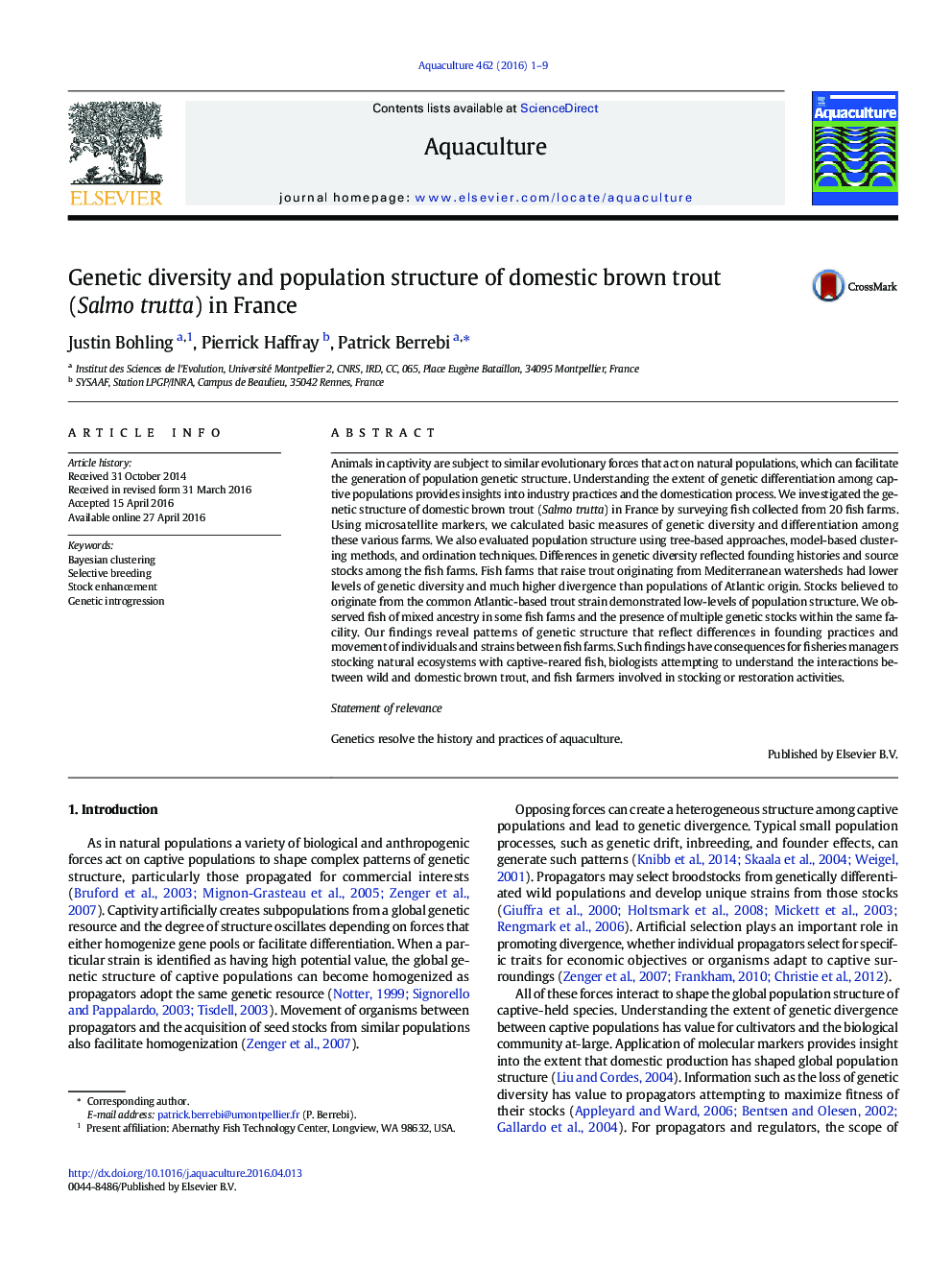| کد مقاله | کد نشریه | سال انتشار | مقاله انگلیسی | نسخه تمام متن |
|---|---|---|---|---|
| 2421365 | 1552825 | 2016 | 9 صفحه PDF | دانلود رایگان |

• We investigated the genetic structure of domestic trout in France.
• Local strains had lower levels of genetic diversity and were genetically divergent.
• Common commercial strains had intermediate structure and evidence of intermixing.
• Insight into how historical practices shape modern stock structure
• Phylogenetic signatures detectable in structure of domestic population
Animals in captivity are subject to similar evolutionary forces that act on natural populations, which can facilitate the generation of population genetic structure. Understanding the extent of genetic differentiation among captive populations provides insights into industry practices and the domestication process. We investigated the genetic structure of domestic brown trout (Salmo trutta) in France by surveying fish collected from 20 fish farms. Using microsatellite markers, we calculated basic measures of genetic diversity and differentiation among these various farms. We also evaluated population structure using tree-based approaches, model-based clustering methods, and ordination techniques. Differences in genetic diversity reflected founding histories and source stocks among the fish farms. Fish farms that raise trout originating from Mediterranean watersheds had lower levels of genetic diversity and much higher divergence than populations of Atlantic origin. Stocks believed to originate from the common Atlantic-based trout strain demonstrated low-levels of population structure. We observed fish of mixed ancestry in some fish farms and the presence of multiple genetic stocks within the same facility. Our findings reveal patterns of genetic structure that reflect differences in founding practices and movement of individuals and strains between fish farms. Such findings have consequences for fisheries managers stocking natural ecosystems with captive-reared fish, biologists attempting to understand the interactions between wild and domestic brown trout, and fish farmers involved in stocking or restoration activities.Statement of relevanceGenetics resolve the history and practices of aquaculture.
Journal: Aquaculture - Volume 462, 1 September 2016, Pages 1–9